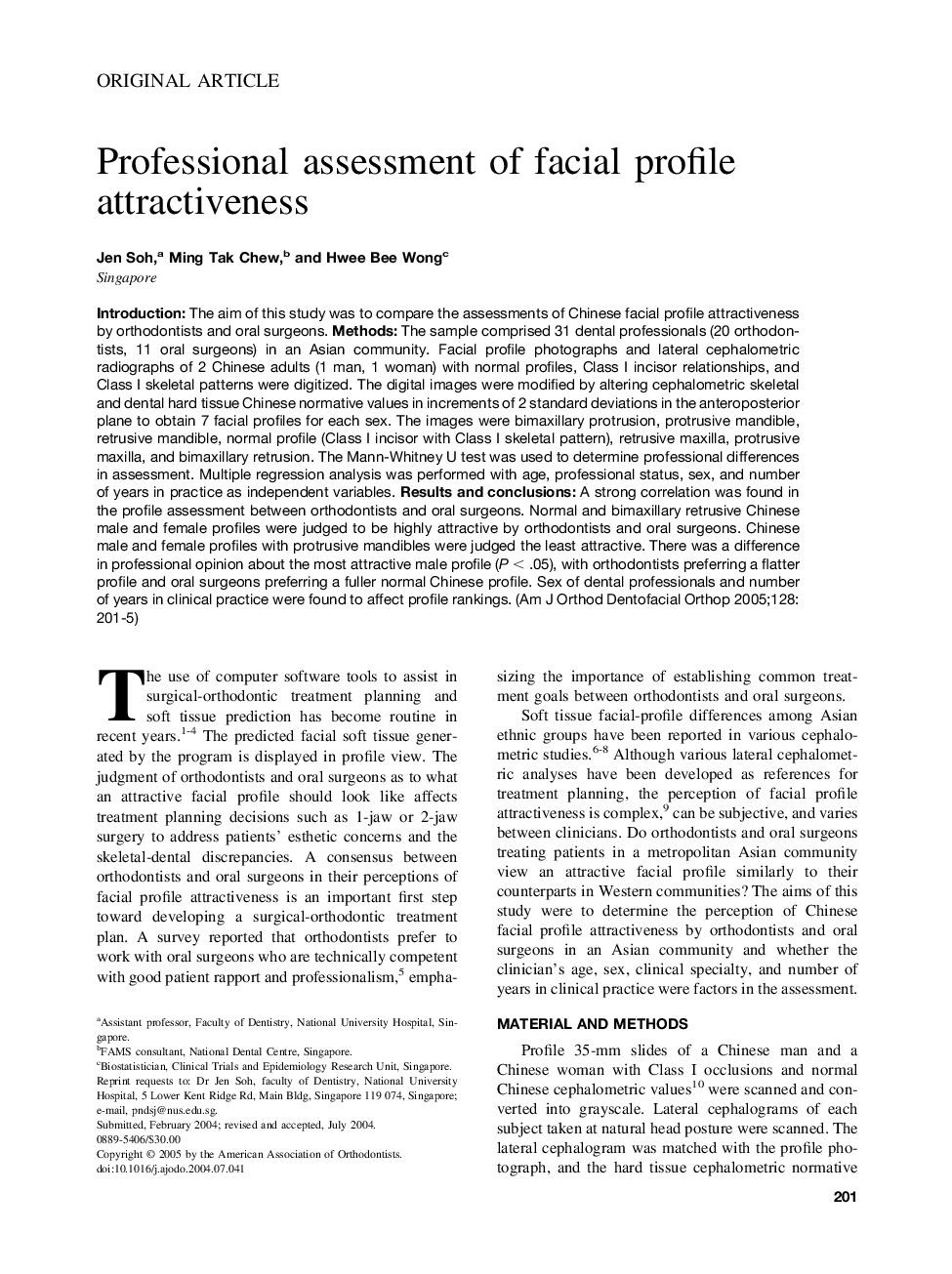| Article ID | Journal | Published Year | Pages | File Type |
|---|---|---|---|---|
| 9992737 | American Journal of Orthodontics and Dentofacial Orthopedics | 2005 | 5 Pages |
Abstract
Introduction: The aim of this study was to compare the assessments of Chinese facial profile attractiveness by orthodontists and oral surgeons. Methods: The sample comprised 31 dental professionals (20 orthodontists, 11 oral surgeons) in an Asian community. Facial profile photographs and lateral cephalometric radiographs of 2 Chinese adults (1 man, 1 woman) with normal profiles, Class I incisor relationships, and Class I skeletal patterns were digitized. The digital images were modified by altering cephalometric skeletal and dental hard tissue Chinese normative values in increments of 2 standard deviations in the anteroposterior plane to obtain 7 facial profiles for each sex. The images were bimaxillary protrusion, protrusive mandible, retrusive mandible, normal profile (Class I incisor with Class I skeletal pattern), retrusive maxilla, protrusive maxilla, and bimaxillary retrusion. The Mann-Whitney U test was used to determine professional differences in assessment. Multiple regression analysis was performed with age, professional status, sex, and number of years in practice as independent variables. Results and conclusions: A strong correlation was found in the profile assessment between orthodontists and oral surgeons. Normal and bimaxillary retrusive Chinese male and female profiles were judged to be highly attractive by orthodontists and oral surgeons. Chinese male and female profiles with protrusive mandibles were judged the least attractive. There was a difference in professional opinion about the most attractive male profile (P < .05), with orthodontists preferring a flatter profile and oral surgeons preferring a fuller normal Chinese profile. Sex of dental professionals and number of years in clinical practice were found to affect profile rankings.
Related Topics
Health Sciences
Medicine and Dentistry
Dentistry, Oral Surgery and Medicine
Authors
Jen Soh, Ming Tak Chew, Hwee Bee Wong,
